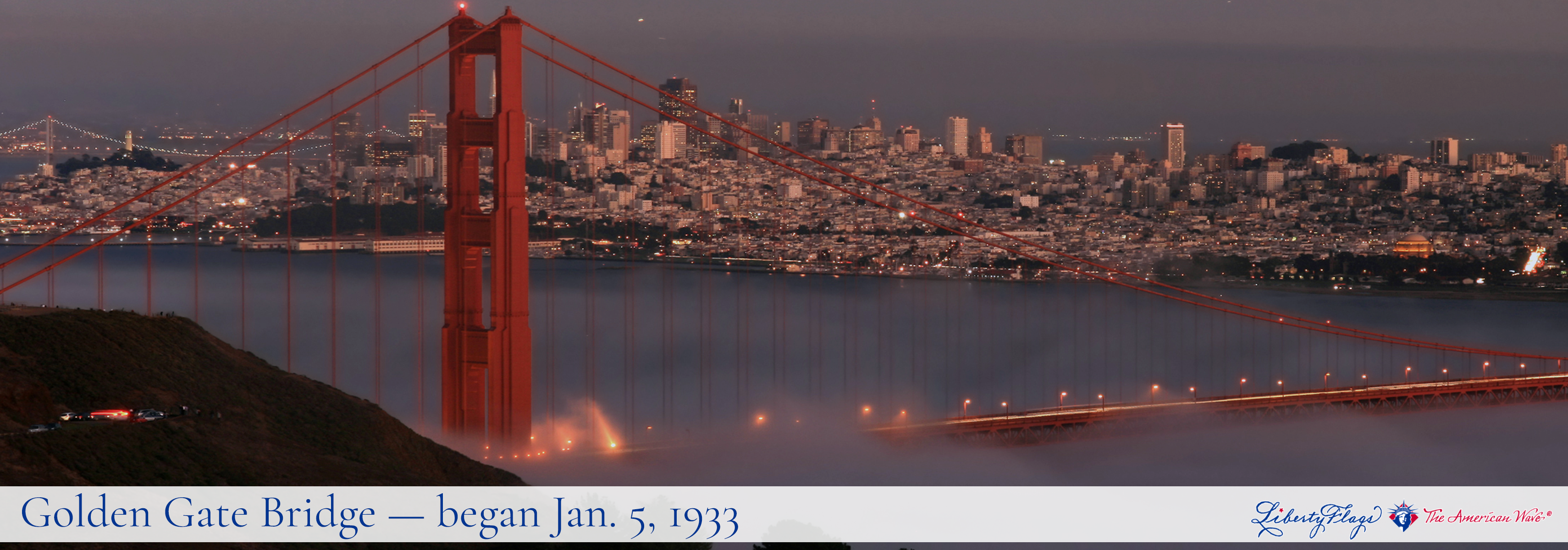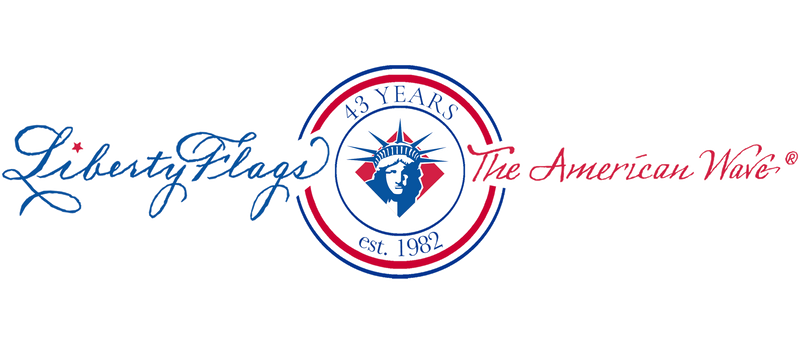
Just Because It Can't Be Done
Doesn't Mean It Can't Be Done...
It was just after the new year of 1933 when the first shovel ceremoniously began to move the tons of dirt that would make way for the Golden Gate Bridge.
However, the colossal bridge required more than earth be moved in order for its construction to take place. The 1.7-mile suspension bridge that spans the Golden Gate Strait in California is a product of American determination, innovation, and tenacity.
The Engineering Marvel That Almost Wasn't
By all accounts, the Golden Gate Bridge represents a historic upturn in engineering history — a success model engineers have referred to in the time since its design and construction.
But the process for getting the project underway was pockmarked by more than a decade of obstructions. From design and execution problems, to military and business challenges, to affordability and economic strain; the Golden Gate Bridge seemed to always be just out of reach.

A Winning Design
The bridge's principal designer was a man named Joseph Strauss. He was chosen because he had previously designed bridges in the San Francisco area and, though they lacked aesthetic appeal, proved to be structurally superior.
Predictably, Strauss' initial design for the Golden Gate Bridge, for all of its careful calculations and emphasis on safety, seemed awkward, overbearing, and devoid of visual appeal; it was rejected at first sight.
Undeterred, Strauss called upon additional support from other engineers and architects. Leon Moisseiff, the engineer behind the Manhattan Bridge in New York, ultimately conceived the suspension concept. Irving Morrow, a residential designer, composed the visual concepts of tower shape, art deco features, lighting, color, and more.
Next, the engineers had to face the challenge of actually constructing the bridge over a fast-moving waterway that is 400 feet deep. In the 1930s, construction technology - particularly in deep, moving water - was not very advanced by modern standards. Innovative techniques were conceived and tested on location, with many of the efforts were hampered by storms, fog, ship traffic, and the tides.

Department of War & Union Pacific
The Golden Gate Bridge connects San Francisco to Marin County, across a channel called the Golden Gate Strait.
Since its modern discovery, the Golden Gate Strait has been a busy thoroughfare for shipping traffic. The waterway connects the San Francisco Bay to the Pacific Ocean. For both tactical and practical reasons, the Department of War (at the time), specifically the U.S. Navy, did not want to have a bridge spanning the opening.
In fact, it took years of negotiating philosophy, technical specifications, and even the color of the bridge to finally assuage the Navy.
However, another unlikely naval influence posed more staunch opposition: the Southern Pacific Railroad Company...
With the invention and popularization of the automobile came the demand for an efficient way to travel between San Francisco and Marin County (directly north across the mouth of San Francisco Bay).
For years, the Southern Pacific Railroad had met that demand by maintaining a monopoly on ferries that carried automobiles and passengers back and forth. The company was not keen to lose out on the revenue from that business and rightly saw the Golden Gate Bridge as a major threat.
All told, the railroad filed more than 2300 lawsuits in attempts to stop the construction of the bridge before an area-wide public boycott of the ferry system put an eventual end to their litigious assault on the project.

Can Ya Spare a Dime?
Aside from the design issues and concerns about execution, the War Department resistance and railroad interference; the Golden Gate Bridge project faced an even bigger obstacle: money.
Initial estimates for the project ranged from 17 million to 35 million dollars — figures equivalent to roughly three quarters of a billion dollars in the modern economy.
But the national economy had just taken a nosedive and the American people were plunged into the Great Depression — there was hardly enough money for food, let alone a frivolous bridge project.
In spite of this, Californians in the San Francisco Bay area took a bold step forward, electing to accept a bond proposal for the initial funding that placed much of their individual private properties at risk.
Determined to rise above a tough challenge, the Golden Gate Bridge came to represent the spirit of American determination to Bay Area residents; and in a stroke of economic ingenuity, the construction project was eventually leveraged against the economic downturn.
What's more, the project was completed under budget and with a safety record that far outpaced the standards of the time.
Beside The Rock and the Hard Place
The Golden Gate Bridge opened for transit on May 27, 1937, preceded by a week of pre-opening ceremonies.
The bridge is a suspension-style bridge, meaning that it is supported by a pair of parallel cables that rest atop two support towers and are encased at either end by masses of concrete that each weigh about 120 million pounds. At the time of its opening, the Golden Gate Bridge was the biggest suspension bridge in the world.
To the east of the bridge is famous Alcatraz Island, and below the southern end of the bridge is a Civil War era fort, Fort Point (now the Fort Point National Historic Site), which was restored and preserved as part of the bridge's construction process.
The bridge stands as a modern marvel of engineering, ingenuity, and of the amazing feats that can be achieved through community effort. The total cost of the bridge was paid off in the early 1970s, and the national landmark is one of the world's most well-maintained bridges.

Nine Golden Gate Bridge facts worth sharing
- The Golden Gate Bridge was built to withstand windspeeds of up to 90 miles per hour and earthquakes of up to magnitude 8.0.
During the construction an earthquake did occur... while a dozen men were working atop the unfinished south tower! The tower swayed as much as 16 feet in either direction to and from the ocean while the men hung on for dear life! - All of the construction of the Golden Gate Bridge was filmed by news and media.
- The 83,000 tons of steel that composed the structure of the bridge were forged in mills located in Maryland, New Jersey, and Pennsylvania.
- The girders that support the north tower were embedded in 98 million pounds of concrete.
- Rivets, state of the art fasteners in the 1930s, were used to piece together the towers; there are roughly 600,000 rivets in each tower.
- Enough cement was used on the piers and anchorages of the Golden Gate Bridge to have paved a 5-foot wide sidewalk from San Francisco to New York City!
- The length of each of the two main cables is roughly 7,650 feet. But the 27,572 individual wires that comprise these cables exceed 80,000 miles — enough length to circle the globe three times.
- The original concrete deck/roadway has been replaced with modern steel plates and a thin layer of asphalt on top, making it stronger, lighter, more flexible, and safer.
- The suspended span of the bridge is designed to flex — it can sag as much as ten feet or rise as much as 6 feet, depending on weather and load.
Hungry for more?
Check out the 3-minute video below from The History Channel.

